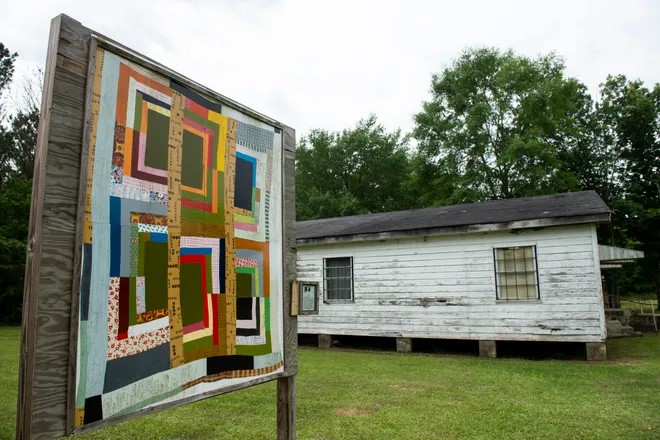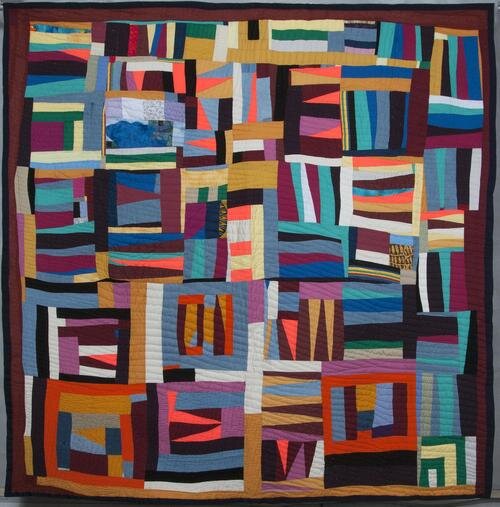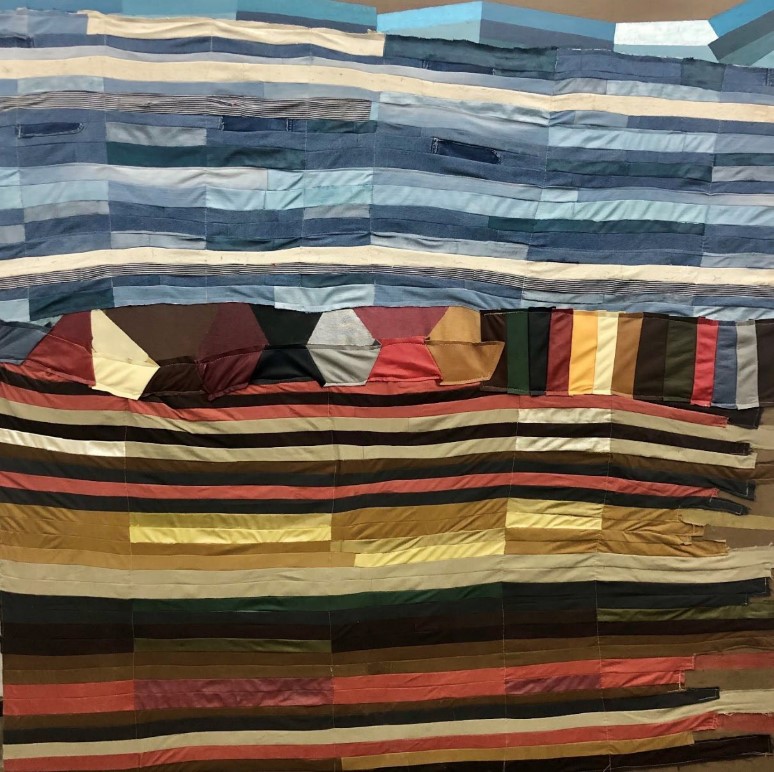Kaneem Smith
By Cammie Tipton, Assistant Curator, Public Art UHS
July 2022 | Using repurposed materials—primarily textiles and fibers—, the Houston-based artist Kaneem Smith (American, b. 1976) seeks to remain in constant conversation with her ancestors. Smith explains that, as an African American, she identifies herself as a descendant of displaced peoples, and she seeks to investigate this history. In particular, she is conscious of the role that African American women play in the American past and present.
Fiber arts—the manipulation of fibrous materials to create works of art—hold a prized place in the history of African American people. Smith explains, “Since childhood I have long been captivated by the concept of acquiring raw organic, plant-based and synthetic fibers and then transforming that material for non-utilitarian use and occasional aesthetic significance.” Fibrous objects such as burlap sacks, homemade clothing, denim, and quilts quietly reveal the lives of African American people who worked on Southern antebellum plantations. Plantation life was centered on cotton—the money it brought and the labor it required—and many African American families can trace their history to a lineage of oppression in service of cotton. This oppression was the economic driver of the institutional racism found in America today.
Of all Southern fiber arts, quilts in particular carry a strong legacy of family heritage within them. Consisting of gathered remnants and discarded scraps from previously used projects, quilts speak to the necessities of sustainability on the plantation where resources for the enslaved were scarce. Quilts are hand-worked surfaces whose labor is one of love and togetherness. Ultimately the finished quilt will provide warmth and comfort to the recipient—a family member or a community friend. In the antebellum South, these works of art existed despite struggle, and because of this, quilts are a symbol of perseverance and strength.
An example of this sustained artistic practice comes from the women of Gee’s Bend, Alabama. Direct descendants of enslaved peoples, for generations the women have produced some of America’s most exceptional modern art in the form of functional, sustainable and soothing quilts. While connected to a dark history of plantation life, quilts are inscribed with a sense of dignity and pride grown from the careful labor in which they are made. Not by chance, they are also beautiful works of visual art. These objects are a symbol of women’s care meted out to those in need. In these quiet, patient works of art, crafted in small scraps of free time, a joy rings out despite hard circumstances, and the quilt becomes a personal art of survival.


Kaneem Smith’s work reflects this legacy. In her series entitled Laborscape, which includes Laborscape 12 in the collection of Public Art UHS, she reflects on what land and the natural environment looked like through her African American ancestors’ eyes.
Laborscapes are constructed of hand-dyed cotton canvas, stretched over a wooden frame, much like a painting. Aesthetically, works in the series resemble a traditional quilt with their scraps of fabric sewn together. However, their form and intent function as assembled land-portraits. They record a close, sustained look at the natural world as it reveals itself to the artist and to the viewers.
In Laborscape 12, for example, the land becomes a fragmented piece-meal arrangement, rows and rows to be tended. Perhaps jagged mountains and sky, perhaps rocky riverbank and river, perhaps rows to be toiled, this assemblage contains many of Smith’s ancestors’ narratives. And yet, through the eyes of the ancestral Black imagination, the natural environment transforms from a landscape to a laborscape.
Smith’s choice of materials reflects this. Some of the fabrics in Laborscape 12 come from the old work clothes of her father: George Smith, a founding member of Houston’s Project Row Houses. As a descendant of community-focused creators, Smith fully understands the inspiration behind the making of a quilt. Smith declares, “A quilt is a representation of something being made out of nothing. And we cannot move forward without acknowledging the past, lest history be repeated.”
